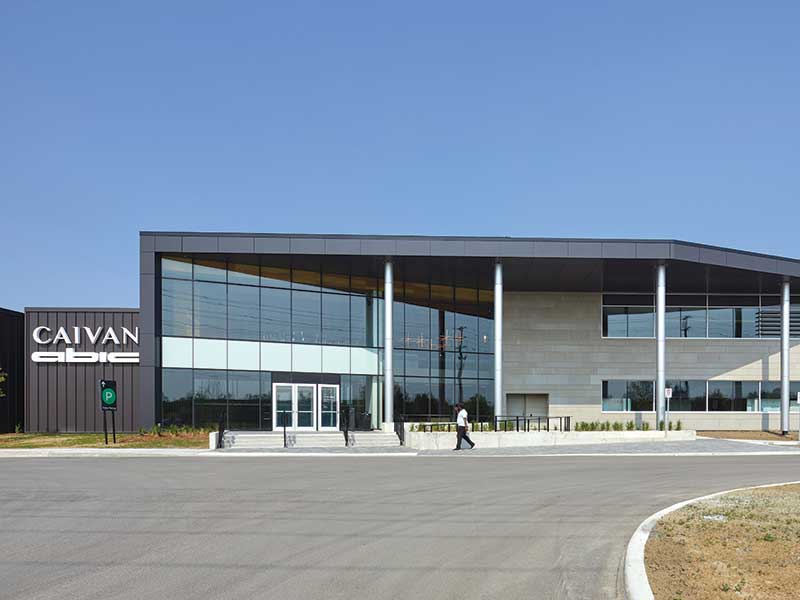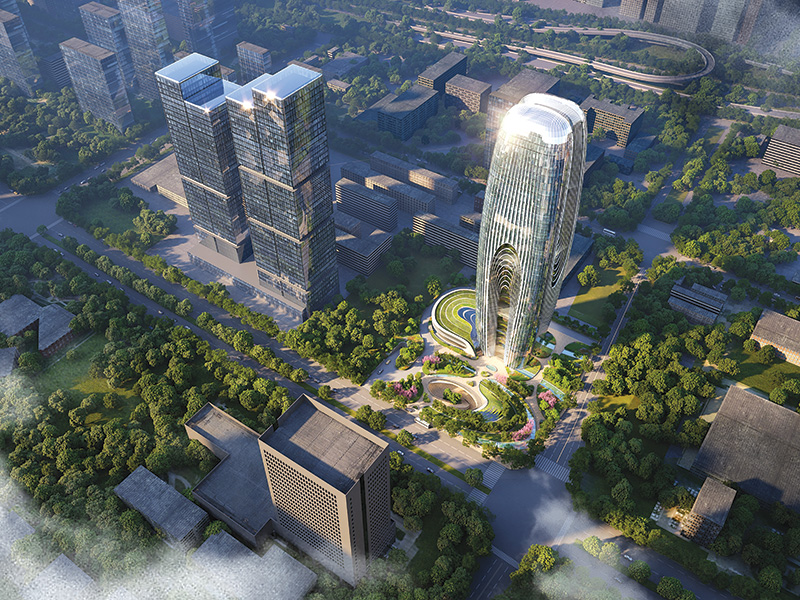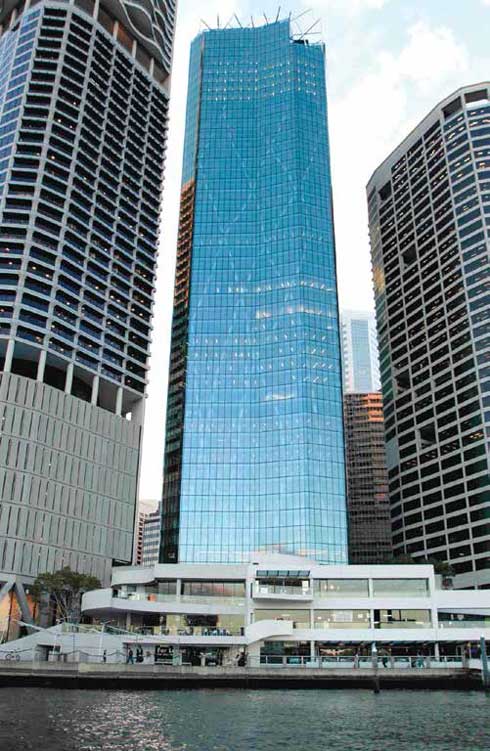 |
| Photos: Developer and Owner: "The GPT Group" 30,000 square metres of ipasol neutral solar control glass protect the offices of the new skyscraper in Brisbane from overheating but provide high transparency. |
At a height of 195 m, it is the tallest office building in the city and stands at an exclusive location in the central business district. With 6 star Green Star office design rating, the building embraces global best practice in sustainable design and pushed the boundaries of the built form in its design, aesthetics and construction.
Designed by architect Cox Rayner in partnership with engineers Arup, the tower's design is inspired by nature. The steel construction, which is visible from the outside, is based on the interwoven appearance of a fig tree trunk. Arup who was responsible for the structural, civil, façade and fire engineering of the spectacular new building, developed innovative structural design which incorporates an organic structural frame, offset core and fully glazed façade to maximize views of the Brisbane River.
Brisbane, capital of the state of Queensland, is an expanding business metropolis on the north-east coast of Australia, characterized by its subtropical climate. With average daily maximum temperatures of more than 25°C and high humidity, Brisbane is a paradise for water sports and is also the home of large-leaved fig trees. With their overhanging branches they provide pleasant shade in the city centre. This inspired the architects when they were designing "One One One Eagle Street." The interwoven steel construction can be seen through the particularly colourneutral ipasol all-glass façade. It is based on the appearance of the fig trees. At night 52,000 veins of LEDs mounted on the steelwork light up the building. They bathe the glass façade in a pulsating light that gives the impression of leaves moving in the crown of a fig tree.
| Credits board | |
| Project | : One One One Eagle Street, Brisbane, Queensland, Australia |
| Developer and Owner | : The GPT Group |
| Architect | : Cox Rayner Architects, Brisbane |
| Structural Engineer | : ARUP |
| Glass products | : ipasol neutral |
| Glass processor | : AGC Interpane |
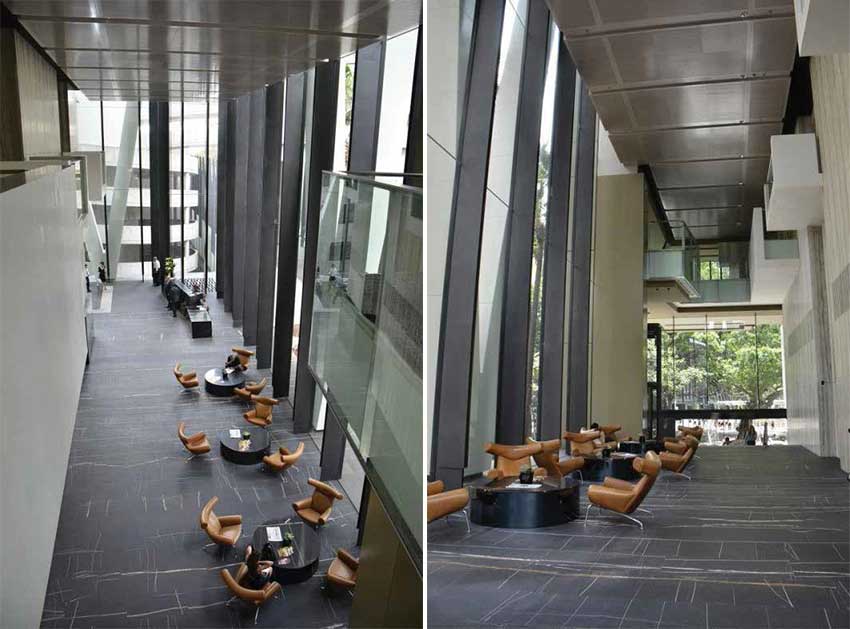
It is not only the design that is innovative; the building has also received awards for sustainability. The 30,000 square metres of ipasol neutral solar control glass from AGC Interpane make a major contribution to the good CO2 balance: the glass allows plenty of daylight to enter the building but reduces overheating of the offices by the intensive solar irradiation that is present throughout the year – which sinks the air conditioning costs and protects the environment.
Structural Design
Situated between Harry Seidler's two landmark towers, Riverside Centre and Riparian Plaza, the site of One One One Eagle Street had been identified in Seidler's Riverside Precinct Master Plan of the 1980s for a tower, along with a fourth future tower further north. The primary challenge of the site was that it is largely occupied by the loading dock and carpark entrance serving the existing towers and limiting the area available for the new towers footings. This constraint entailed a search for a structural solution where the wind loads and weight of the building could be transferred laterally through it to the available ground points.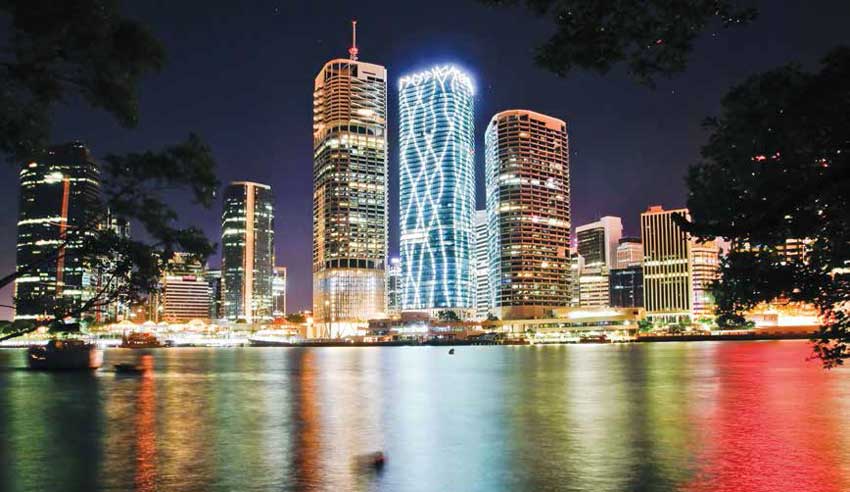 |
| Photos: Developer and Owner: "The GPT Group" At night the inner steel construction of "One One One Eagle Street" is illuminated spectacularly by LEDs. |
It was from this pursuit that the organic structure evolved, yet it was its architectural possibilities that were enticing. The specific structural configuration was developed from computer analysis using an algorithm called 'phototropism' or 'growing towards the light'. This algorithm had particular appeal due to the towers direct visual relationship with Brisbane's most treasured fig trees across the road.
The tower comprises 54 levels with the core located in one corner where its load can be directed to unimpeded ground. The height is subdivided into four riser zones enabling the net floor space to enlarge with each successive rise, assisted by reduction in the perimeter column sizes much like the branches of a tree.
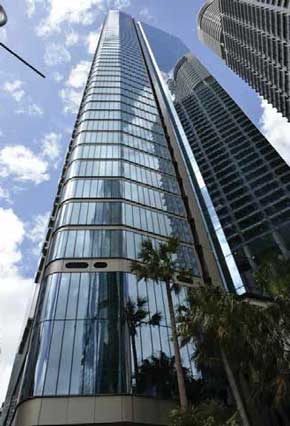
The structure emerges at the base and top of the building to full view. The base consists of two levels, the upper of these providing accesses to the core, enabling the lower level to act as an internal public plaza. It will facilitate pedestrian movement from the ferry terminal in front of the Riverside centre through into the city, the aim being to contribute to and enrich the public realm of the city.
From an environmental perspective, the design demonstrates how a curtain glass tower can respond to the subtropics without resort to external shading, and the building has achieved a 6 Star Green Star (v2) rating with a 5 Star NABERS energy target.
One One One Eagle is possibly the first high rise tower in the world for which the structure is based upon organic design principles. It is not a gratuitous structure devised for aesthetic purposes, but to solve particular constraints specific to its site. It generates, however, an architecture that is distinctly responsive to context, both natural and built, and also hope to stimulate new directions in subtropical and tropical tower design.

